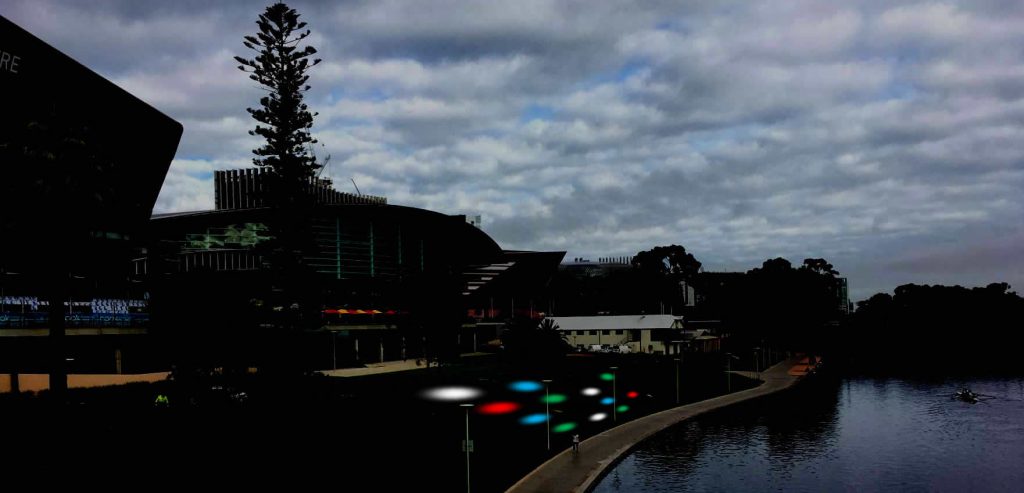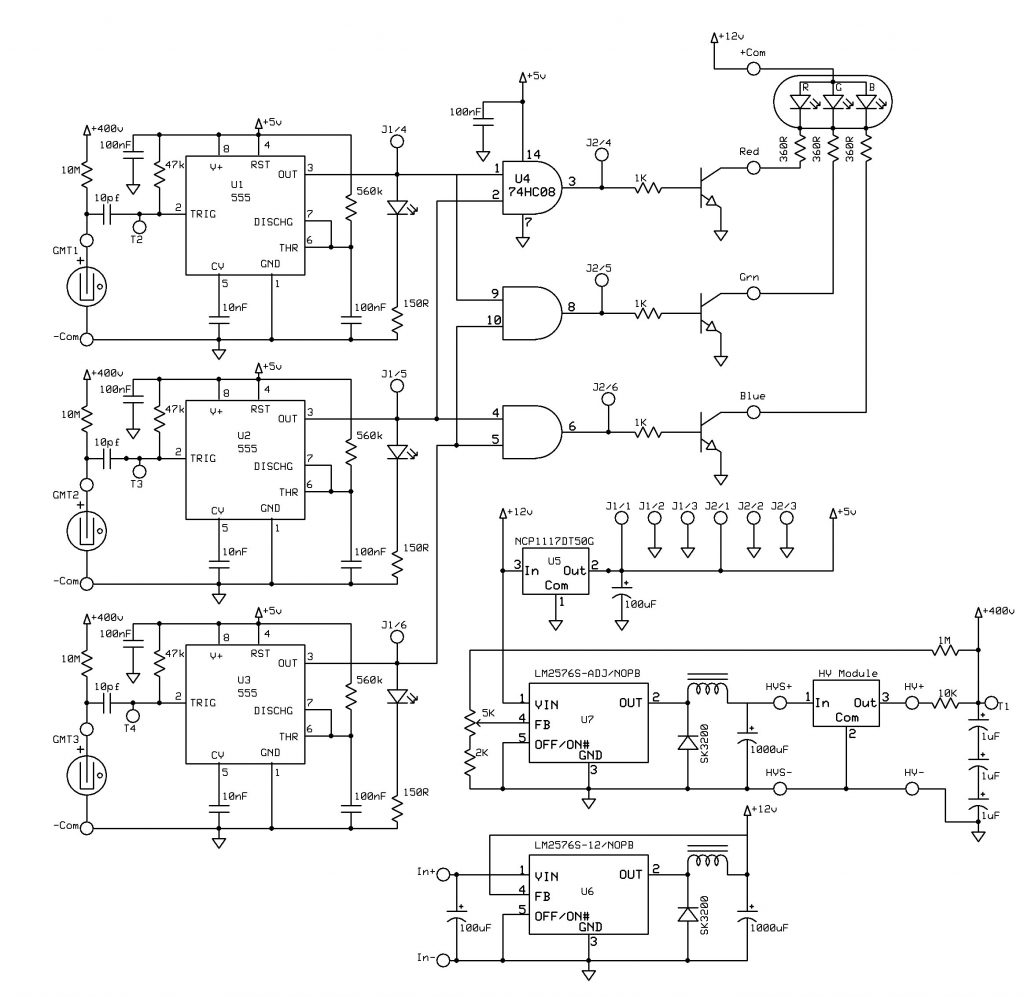The aim of this project is to deploy 16 individual cosmic ray detectors on the Elder Park foreshore in Adelaide. This is a part of the Splash Adelaide 2017 Winter Festival and is built in collaboration with a group of artist-musicians called Sacred Resonance.
Proposed Location on the Elder Park foreshore
When the public come to visit this installation, they will experience how cosmic rays are all around us and arrive in showers of particles. Each detector will seem to randomly twinkle with colours and sounds that are triggered by cosmic rays. The experience will be not unlike walking through a maze of colourful wind chimes.
However, as cosmic rays arrive in showers of particles, some of these detectors will trigger in unison and others randomly. A similar experience to what can be witnessed in nature like the sounds of Cicadas or the flashing light of Fireflies, where both sound and light fade in and out from randomness into unison.
Cosmic Rays have been present throughout the entire evolutionary history of life on our planet and so this display reinforces our connection with the universe and the importance of science and understanding the natural world.
However, the project has no agenda other than the first of what I hope are thought-provoking art/science installations. Which will provide an interesting window into the universe and the natural world around us, leaving the observer to form their own connections and conclusions.
Technical
Each detector in the array will produce a bright flash of one of 4 colours (red, green, blue or white). In the same manner, one of 3 musical notes ( e.g. C, F, G or other notes) or all 3 notes together depending on the direction and angle of an ionising particle called a muon passes through two or more Geiger–Müller tubes simultaneously. Music samples are currently being developed by Darren Curits a musician at Sacred Resonance.
This design will use 3 Geiger–Müller tubes in each and gate logic for coincidence detection as used in previous prototypes, as these have worked very reliably.
Working demonstration prototype.
The detectors aesthetics, however, have yet to be finalised it may either be enclosed in a type of Sphere on the ground, bollard lamp post, something that hangs on a pole, tripod or put directly into the ground like a paving block.
A rough demonstration of light and sound using a current prototype
Overview block diagram of operation
PCB Layout 96.5mm X 63.5mm

 Robert Hart
Robert Hart

Discussions
Become a Hackaday.io Member
Create an account to leave a comment. Already have an account? Log In.